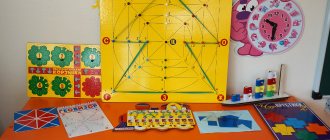Today, every self-respecting parent considers it necessary to send their child to all sorts of clubs like “Little Erudite”, “Smart Guys”, “Geeks” as early as possible. At the age of three, modern mothers and fathers require their children to know English, be able to count to 100, and draw in the style of Van Gogh.
But almost none of the modern parents pay attention to the development of the child’s emotional world, his feelings, emotions, communication abilities - what is included in the concept of “emotional intelligence”. Adults believe that these processes in a child should develop on their own, without outside help. And this is a big misconception.
An impoverished emotional sphere begins to “slow down” the development of intellectual processes. In addition, the increased technologization of life, the constant use of gadgets by adults and children lead to the emergence of the “dry heart” phenomenon: children become unemotional, less responsive to the feelings of other people and understanding their own emotions, their emotional intelligence does not develop.
So what to do? The answer is simple - to develop the child’s emotional intelligence, to teach him to understand himself and others.
In this article, you will become familiar with the concept of emotional intelligence, find out whether its development affects success in school, and also get an idea of the methods and means of developing the sphere of emotions and feelings of your child.
Content:
- Emotional intelligence: concept and components How does emotional intelligence help a child in school learning?
- Is it necessary to develop EI?
- Early age (from birth to 3 years)
Features of emotional intelligence at different ages
Let's look at how emotional intelligence develops in children by age.
Early age
A child from birth to three years of age absorbs all incoming information as actively as possible. From the very first months of life, he reacts to the emotions of his mother and father. Smiles and laughs back or cries if he hears negative intonations. As he grows up, he learns to read people's emotions and apply this knowledge to achieve his goals.
Preschool age
At three years old, a child begins to separate himself from mom and dad for the first time and tries to become independent. This difficult time for parents is called the “three-year crisis,” or “I am myself,” and carries with it enormous potential for the development of the child’s individuality. Most often, it is at this age that the child will deny even those facts that are illogical to deny. Specifically put shorts on your head and a T-shirt on your legs and say that this is how it should be.
Parents should give the child the opportunity to determine from their own experience what is the right and best thing to do. You should not punish for obstinate behavior; it is better to be patient and wait for the end of the first serious crisis.
After graduation, the preschool child enters an active social environment. Now he is surrounded not only by his mother, father, grandparents, but also by other adults and children. Throughout preschool childhood, the child acquires communication skills, learns to understand the emotional world, which helps him build social connections and prepares him for further stages of life.
School age
Typically, when children reach the age of seven, they enter school. At this stage, the child expects not only new knowledge, but also more stringent demands from adults, new acquaintances that increasingly alienate the child from the adult. The student reaches a new level of emotional intelligence and becomes able to more fully show empathy.
Emotional intelligence: concept and components
Emotional intelligence is a type of intelligence responsible for a person’s recognition of his own emotions and the emotions of those around him, as well as for managing them. Scientists became interested in it relatively recently. The first work devoted to its study appeared in 1990. Its authors, Peter Salovey and John Mayer, identify four components of emotional intelligence:
- Perception of emotions is a person’s ability to recognize his own emotions and the emotions of another person (by facial expressions, gestures, posture, behavior, voice).
- Understanding emotions is the ability to determine the reasons for the appearance of a particular emotion in oneself and others, to establish a connection between emotions and thoughts.
- Managing emotions is the ability to suppress emotions, awaken and direct your own and others’ feelings to achieve goals.
- Using emotions to stimulate thinking - awakening creativity in yourself, activating the brain with the help of your own emotions.
In other words, the theory of the development of emotional intelligence consists of a child’s journey from understanding emotions to managing them.
How does emotional intelligence help a child in school learning?
The specifics of the modern educational process require from today's schoolchild increased attentiveness, rapid response to changing conditions, developed communication skills, suppression of momentary desires in order to achieve assigned tasks.
The results of a recent study of the level of emotional intelligence of high school students, conducted in a secondary school in the Orenburg region in 2022, are interesting:
Schoolchildren with a high and average level of development of the sensory sphere are adapted to the conditions of school life, more easily establish and maintain contacts with teachers and classmates, and are successful in the learning process.
Children with low and very low levels of development of emotional intelligence experience difficulties in communicating with peers and teachers, often conflict with them or find themselves isolated from the team. They often cannot cope with emotional states in stressful and critical situations. The performance of these children is satisfactory.
Are you worried that your child has problems communicating with peers at school, kindergarten, or that he does not have good relationships with teachers? Find out how things really are so you can help your child. Listen to the sound around you and determine your child’s location in real time using the application for caring parents “Where are My Children” from the AppStore and GooglePlay.
Do you need to develop emotional intelligence?
Definitely necessary. To determine at what level of development your child’s sphere of emotions and feelings is, you need to know the signs and criteria of low emotional intelligence, as well as methods for diagnosing it.
Signs of Low Emotional Intelligence
The level of emotional intelligence is called “emotional intelligence quotient” or EQ.
A person with low EQ:
- incapable of sympathy or empathy for another person. Neither other people's sadness nor other people's joy touches him. Such a person also cannot accept other people’s help and support; he does not understand people’s motives;
- close relationships like love and friendship are not available to such a person, since friendship requires mutual concessions, exchange of emotions, compassion and emotional support. Even if such a person creates a family, there will not be a warm atmosphere of love and attention;
- does not know how to control his emotions. Often such a person demonstrates either unbridled joy, uncontrollable rage, or lingering sadness. He does not always understand what is happening to him and how to help himself in such situations. In emotionally stressful situations, such people also get lost.
- does not understand that his own uncontrolled emotions can lead to disastrous consequences; in any unpleasant situation he blames other people, but not himself.
- does not know how to talk about feelings, cannot answer the question “What are you feeling now?”, does not listen to his own feelings.
EQ diagnostics
Currently, there are 3 groups of methods for measuring EQ levels in adolescents and adults:
- techniques that study individual abilities that make up emotional intelligence;
- techniques where a person evaluates himself;
- methods where self-assessment and assessment of the level of emotional intelligence are carried out by members of the subject’s family, his colleagues, and friends.
To diagnose the level of emotional intelligence of preschoolers and schoolchildren, projective drawing tests of the type “Completing drawing: the world of things - the world of people - the world of emotions” are used, as well as questionnaires of various levels of complexity.
If you find it difficult to diagnose your child’s emotional intelligence yourself, contact a kindergarten or school psychologist.
Development of the sphere of emotions and feelings in children
At what age should you develop emotional intelligence? From birth. From the very first day of a child's life. Let us tell you in more detail how the child’s emotions and feelings develop at each stage of growing up.
Early age (from birth to three years)
As soon as a child is born, the development of his emotional intelligence begins. He sees the smiles of his family and friends, feels their touches, learns to accept and recognize the emotions of happiness, love, and care.
In the third week of life, the baby develops a revival complex - a special emotional-motor reaction directed towards an adult, which is expressed first in visual concentration on the face of mom and dad, then a smile, motor revival and humming appear.
A child’s acquaintance with the emotions of fear, sadness, and pain occurs when colic begins, teeth are cut, or the mother does not come to him for a long time.
Preschool age (4-7 years)
In preschool age, the development of emotional intelligence continues. The child gets acquainted with the names of emotions, learns to identify them in himself and other people, and learns ways to overcome anger and aggression.
The main thing at this age for a child is to fully experience the entire spectrum of feelings. But their parents do not always support them in this. Remember how often you heard from your moms and dads, and maybe you yourself often told your child: “Don’t cry!”, “Upset because of nonsense,” “I’m being a ninny,” “Don’t fight, you’re a girl.” . This is nothing more than the suppression of a child’s emotions, their devaluation, which not only does not contribute to the development of emotional intelligence, but also makes the child ashamed of himself and his own feelings.
Psychologists warn that holding back strong emotions in preschool age can lead to neuroses and psychological problems in adulthood.
Upon entering kindergarten, a child acquires the first skills of social interaction, learns to make friends, communicate with peers and adults.
School age (7-10 years)
At school age, the most intensive development of a child’s emotional intelligence occurs. He acquires the ability to recognize and accept his own feelings and emotions, and learns to control them. The child begins to understand the feelings of other people, find a common language with them, imagine himself in the place of another person, and empathize with him.
The main sources of knowledge of the world of feelings and emotions for a child are family and school. At school, the child takes part in the life of the class, interacts with classmates and teachers.
The child may face situations of bullying, rejection by classmates, and prejudiced attitudes from teachers. Difficult situations play a special role in a child’s life, giving him the opportunity to test his abilities, which in some cases will bring joy and pride in his own achievements, and in others will cause anger and disappointment. Here, emotional intelligence becomes a kind of regulator of life, consolidates the necessary emotional information and weeds out the unnecessary.
Adolescence (10-18 years)
This age is characterized by a “storm” of emotions and feelings that a teenager cannot always cope with. A young man or girl begins to realize his own exclusivity and uniqueness, at the same time opposing himself to others, which often leads to conflicts both with peers and with adults.
It is difficult for a teenager to process his emotions; he often does not understand what is happening to him. Emotional manifestations in adolescence are unstable: from wild joy to uncontrollable outbursts of aggression.
Therefore, it is important for parents, during this difficult period for everyone when a child is growing up, to become for him not a strict dictator, demanding unquestioning obedience and compliance with all norms and rules, but an understanding and empathetic friend. Moms and dads should not reject or devalue the complex and sometimes contradictory emotions, thoughts and actions of their child.
The emotional sphere of a preschool child
At each age stage, emotional experience accumulates. In the preschool period, there is a significant expansion of the circle of people with whom the child comes into contact. A variety of contacts enriches the emotional sphere.
Imagination also develops rapidly. And this process is the most emotionally intense compared to other cognitive processes.
From 2 to 4 years old, an emotional and practical form of communication is built between children. Often the communication of such kids consists of the opportunity to run or jump together. This makes them feel joy, interest, and admiration.
The emotional development of a child is a complex gradual enrichment of his emotional sphere, occurring in the context of general socialization.
Children's emotions are unstable. Their mood changes quickly. Younger preschoolers understand such simple emotional states as fear, anger, resentment, joy and grief. Every year, familiarity with human experiences expands.
It is still difficult for preschoolers to understand what feeling they are experiencing at a certain moment. However, some emotions are already identified by them, and quite early on you can hear from the baby: “I’m angry” or “I’m offended.”
If things work out, the preschooler experiences bright positive emotions. If it doesn’t work out, there will be strong negative experiences. There are more negative emotions. And they are not desired as much as positive ones. Teaching a child to recognize them and comprehend them is the main task of developing the emotional sphere in preschool age.
Then it will be time to learn to control the forms of manifestation of feelings. These are critical steps in developing emotional and social intelligence.
Practical advice for parents
It is important for parents to understand that there are no good or bad emotions. Every emotion experienced by a child is important and necessary for his full and harmonious interaction with the world around him. Through understanding and “living” his own and others’ emotional states, the child must come to control, create and change the world around him for the better. This is what will be the key to his happy future.
The development of emotional intelligence involves the child’s gradual mastery of each stage:
Understanding your own feelings
At this stage, the child gets acquainted with all the diversity of the emotional world, learns the name of each emotion, how it is expressed, listens to himself, learns to distinguish one emotion from another, and understand the reason for its appearance.
At this stage, parents are advised to:
- tell the child about feelings and emotions through visual material: pictures, manuals, children's literature with illustrations;
- read fairy tales and watch cartoons with rich emotional content together;
- voice your feelings and the feelings of your child in various situations: “I’m very angry now because you broke the cup”, “I see that you are upset because your favorite car is broken”, “Grandma is glad that you gave her this wonderful drawing";
- Ask your child every day: “What’s your mood today?”, “How did you feel today?”
Understanding another person's feelings
The child learns that not only he, but also other people have emotions and feelings, learns to determine what another person is experiencing by his facial expressions, posture, behavior, learns to support and empathize.
Parents will find it useful:
- don’t “sculpt” yourself into being ideal, happy and satisfied with life 24 hours a day. The child should see you for real: sometimes upset, sometimes tired, and sometimes angry. Only then will he learn to understand the feelings of other people and change his behavior in accordance with them: “Dad is upset today, he has troubles at work, let’s not play noisy games today, but watch a cartoon in your room”;
- discuss the behavior of fairy tale and cartoon characters: “What do you think Vasilisa the Wise felt when Ivan Tsarevich burned the frog’s skin without asking?”, “What do you think Kolobok’s mood was when he rolled away from his grandparents?”;
- develop a child’s sense of empathy and compassion. Don't forget that mom and dad are role models for their children. If your family does not have trusting relationships, an atmosphere of love, acceptance and support, all these feelings will remain inaccessible to the child.
Managing your own behavior
Once a child learns to understand and analyze what he feels, he will be able to control and manage his emotional state.
Parents need:
- teach your child acceptable ways to get rid of anger and anger: beat a pillow, tear paper, stomp your feet;
- teach to listen to bodily sensations;
- Together with your child, choose ways to raise your mood: go for a walk in the fresh air, watch a cartoon, listen to fun music.
Social interaction and the use of emotional resources in achieving goals
To become a happy and successful person in the future, a child needs to learn to interact with the people around him: establish and maintain interpersonal relationships, provide timely help and support, resolve conflicts, and be able to work in a team. This can be achieved only by being well aware of your own feelings and the feelings of other people. And - like the top of the pyramid - use your emotional resource to achieve your goals, personal growth and self-realization.
It is important for parents:
- develop the child’s communication skills through joint games with adults and peers, watching cartoons and films, reading literature on the topic of friendship and friends;
- develop adequate self-esteem, independence, and self-confidence. The child must be aware of responsibility for every action he makes and be prepared for the consequences.
Formation of social intelligence in preschool age
Like other abilities, the ability to communicate effectively with others needs to be developed from childhood. Knowing the structure of social intelligence gives a clear hint on which skills to focus on developing.
A preschooler, even at 6-7 years old, will not be able to analyze interaction situations, which is implied by developed social intelligence. But he can understand non-verbal and verbal expression.
Nonverbal expression includes facial expressions, postures, and gestures that express a person’s certain mood and feelings. Verbal is the nature of speech utterances, which is determined by tone, emphasis, and melody of sound.
Already a three-year-old child understands perfectly well what adults mean when they shake their finger at him. And he also perceives the tone of speech in accordance with what it expresses.
In preschool age, the child develops social sensitivity, the ability to empathize with a loved one, and closer to school age, the ability to be happy for another. These qualities are a natural manifestation of social and emotional intelligence.
The ability to recognize emotions by facial expressions and gestures
Sometimes kids are surprised by how, offended, they intertwine their hands on their chest and turn away. It's as if they were specially trained in these closing gestures. It is obvious that all children use facial expressions and gestures in accordance with their state and mood.
The goal is to expand their body language as well as teach them to understand other people's nonverbal cues.
By learning the elements of expressive movements, preschoolers will become more likely to notice the facial and gestural signals of others. It will be easier for them to express their feelings and emotions, as well as understand the feelings of their peers.
The most appropriate way to teach a preschooler expressive movements is to introduce basic emotional states. As you know, 10 emotions are considered fundamental:
- Interest
- Joy
- Astonishment
- Suffering
- Anger
- Contempt
- Disgust
- Fear
- Shame
- Guilt
Of course, there is no need to introduce the child to the above list. It is necessary to draw the preschooler’s attention to how he expresses this or that emotion in a playful way. And be sure to analyze together how interest, or surprise, or anger, etc. is manifested.
For example, you can intrigue your baby: “There is a small object clutched in my hand. What is this?". The child will be active and impatient to open his hand and look at the mysterious object. After this, you need to explain to the child that he was very persistent because he was interested. Depict the same facial expressions of interest that were reflected on the baby’s face. Explain that when a person is very passionate about something, he may frown. He has a focused gaze directed at the subject of his interest.
Preschoolers enjoy playing out short sketches of emotions. “Imagine that you took a bite of candy, and it’s... salty” - the emotion of disgust will be vividly reflected in your facial expressions. “Your dog hurt its paw,” in response, the child’s face expresses compassion.
Such exercises will bring the greatest benefit if you discuss emotional reactions with the child, mirror his facial expressions and gestures, pay attention to frowning or raised eyebrows, the line of the mouth, the position of the hands and similar signs.
Developing the ability to perceive nuances of speech
Children begin to distinguish the melody and tone of speech much earlier than they themselves speak. The tender, joyful notes of the voice are the first thing the child hears. In the future, an understanding of strict statements will be added. This is the basic nature of speech addressed to a child.
Adults also successfully train children to perceive speech tonality associated with pain and suffering. When communicating with a child, it is common to demonstrate that someone may suffer from his careless behavior. He threw a cube, hit him with a typewriter - pain from such actions is inevitable. And it is absolutely correct that adults show the child, both with facial expressions and voice, that he has caused suffering. Reproducing feelings in a comprehensive manner is an effective way to develop social intelligence.
Older preschoolers have a good command of speech, they have already developed a sound culture of statements, and they distinguish much more nuances of speech sound. They notice an intermittent voice under the influence of fear, feel a mocking tone and other features.
It should be noted that with a high level of social intelligence, both children and adults are sensitive to the contemptuous, mocking, and aggressive tone of speech. But they themselves do not allow such disrespectful speech. Rudeness, impudence, arrogance are signs of a low level of social intelligence of the person who demonstrates them. If children know this truth from preschool age, there will be a chance to reduce negative trends in society.
Developing an understanding of cause and effect in behavior
From childhood, you need to instill responsibility for your actions and actions. The child begins to understand the simplest cause-and-effect relationships as he masters the subject area. By engaging in active communication with peers, a preschooler will have to learn to identify the causes and consequences of specific actions and emotional manifestations. Which is much more difficult than at the everyday level. “The cup broke because it fell” - this is understandable to the child. “Why doesn’t Dasha want to be friends with me?” - this is not clear.
Preschoolers acutely feel injustice shown by their peers. They get offended and quarrel, but do not connect actions with causes and consequences. That's why children so often turn to adults with complaints. Moreover, the nature of the complaints can be different:
- Resentment for oneself (they are not accepted into the game, they prevent you from doing your job, they call you names).
- They offend someone else and need to protect him.
In any of these cases, children expect an adult to intervene and restore justice. Often adults react to a momentary fact without delving into the previous events of children's relationships. Although, it’s time not only to act as an arbiter, but to find out the deeper reasons and discuss them with the children.
Due to little experience, preschoolers are poorly aware of the reasons for the actions of the people around them, and often their own behavior. It is especially difficult for them to understand the experiences and feelings of others. Adults help children better understand cause-and-effect relationships if they discuss with them not only relationships with peers, but also the actions of literary characters and fairy-tale heroes.
Games and exercises to develop a child’s emotional intelligence
Psychologists recommend using games and exercises to enrich the sensory sphere and develop the emotional intelligence of children of different ages. All of them can be used by parents to help their child understand themselves and other people.
Games with emotional pictograms
Make pictures with faces with emotions of joy, sadness, anger, fear, surprise, calm, etc. You can use them separately or make a so-called “Mood Cube”. The child is asked the question “What is your mood today?”, and he selects the corresponding picture. Subsequently, you can complicate the game by describing certain situations, for example: “Katya had a fight with her best friend Masha. How do you think she felt? What is her mood now?
Exercise “Show the emotion”
The child conveys this or that emotion with the help of facial expressions, gestures and posture - mom and dad guess and vice versa. You can have a competition for the best depiction of an emotion.
Watching cartoons, films, reading literature, followed by discussion of the characters’ feelings.
Game “I am happy when...”
The child, together with mom and dad, take turns telling in what situations they are happy, afraid, upset, surprised, etc.
Features of social intelligence of preschoolers
Adults receive reliable information in communication, largely focusing on non-verbal signals. Many psychologists emphasize the importance of facial expressions and gestures and note their predominant role in relation to speech. While adults are excellent at controlling speech, hiding true feelings and motives behind the right phrases, facial expressions and pantomimes are much less controllable.
It is more difficult for preschoolers to navigate sign language. This is explained by the peculiarities of the development of children’s cognitive processes and the formation of forms of communication. In preschool age, non-situational communication is just being formed. The development of speech skills as the basis of relationships between people comes to the fore. Children hear words and perceive the meaning of messages literally. Verbal information is the main thing for them.
The child will not look for a different meaning, even if his peer hands him a toy under his mother’s persistent persuasion that he needs to share it with friends. All facial signals will remain ignored, and the preschooler will happily take this toy.
Social intelligence in preschool age is still only in the initial stages of its development. Each structural component of intelligence needs to be developed. And in the future he will work to achieve the main goal - eliminating barriers to communication and developing mutual understanding in each individual case.







